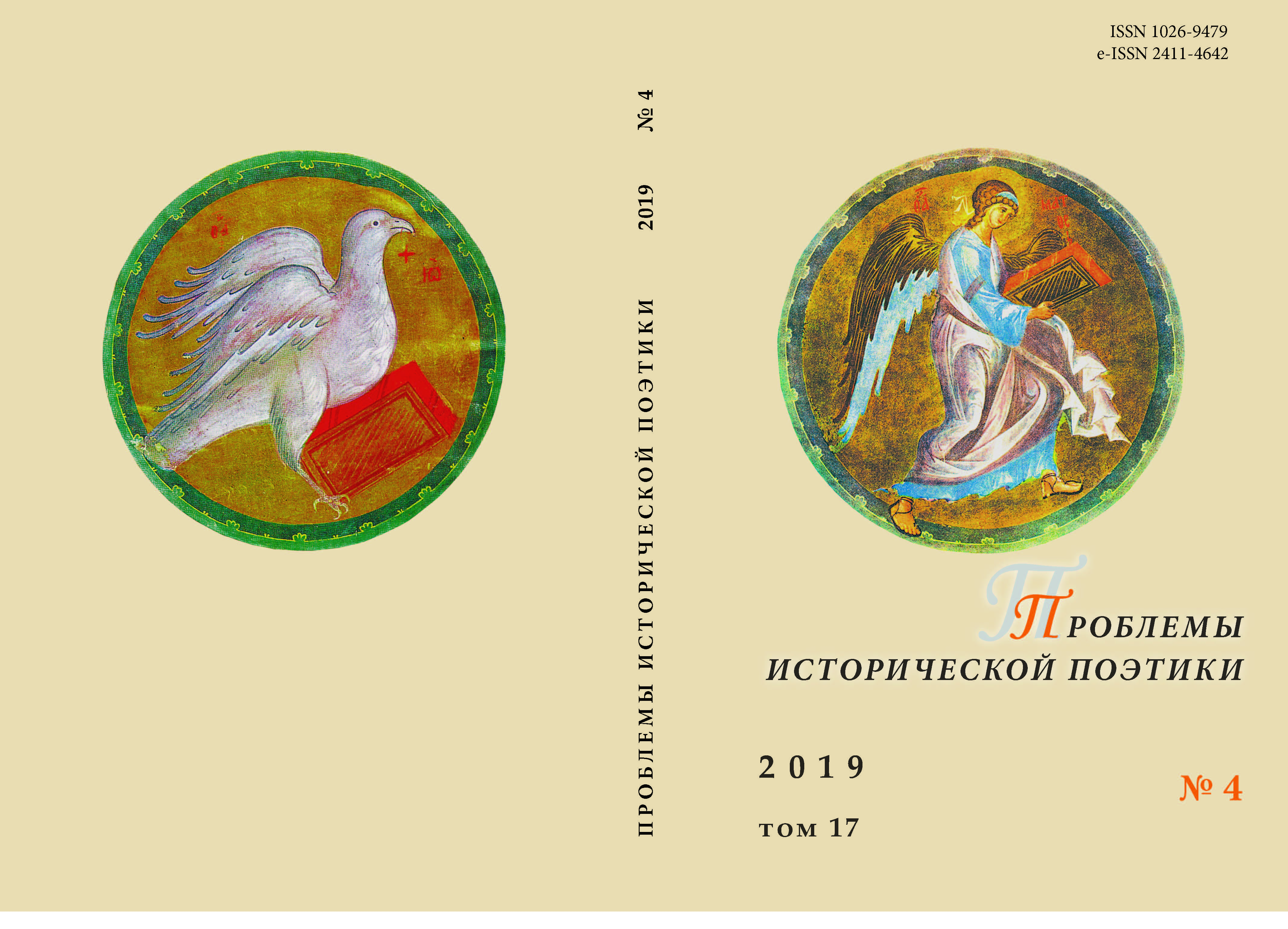АХРОМАТИЧЕСКИЕ КОЛОРАТИВЫ В ПОЗДНЕЙ ХУДОЖЕСТВЕННОЙ ПРОЗЕ Л. ТОЛСТОГО: СЕМАНТИКА И ФУНКЦИИ
ACHROMATIC COLORATIVES IN TOLSTOY’S LATE ARTISTIC PROSE: SEMANTICS AND FUNCTIONS
Author(s): Elena MasolovaSubject(s): Studies of Literature, Semantics, Russian Literature, Philology, Theory of Literature
Published by: Петрозаводский государственный университет
Keywords: achromatic coloratives; coloratives’ shades; occasional semantics of coloratives; coloratives’functions; color painting; colorative code; Tolstoy’s late artistic prose;
Summary/Abstract: This article deals with the study of the author’s changes of semantics and functions of achromatic colors in Tolstoy’s late artistic prose. The study tested that in Tolstoy’s national stories coloratives with the root “black” are asymbolic and mainly perform the descriptive function. In Tolstoy’s stories of the 1880s these coloratives acquire symbolic meaning and foreshadow the atrocity of the character. In the finale of “Resurrection,” the disturbing semantics of black color gives way to the life-affirming semantics. In “Hadji Murd” when depicting the appearance of characters, black color performs the characterizing function. In Tolstoy’s national stories dark color has the descriptive function, but in “Where Love is, There God is Also” it fulfills the prospective one. In Tolstoy’s stories of the 1880s coloratives with the root “dark” “predict” the sad fate of people who ignored the commandments of God. At the beginning of “Resurrection”, darkness is a metaphor of immoral life, at the end of the novel the colorative with the root “dark” inspires hope for the renewal of life. In “Hadji Murd” coloratives with the root “dark” have the descriptive function. In “What Men Live by” white color recreates the divine nature of the Angel. In Tolstoy’s stories of the 1880s the white color has negative semantics and the characterizing function. In “Resurrection” when recreating images of nature, white color has positive semantics and the prospective function. In portrait painting in “Hadji Murd” white color has negative semantics and the characterizing function. In “What Men Live by” the light is symbolic and is associated with the realization of God’s commandments. In “The Death of Ivan Ilyich” the light gives the character the joy of merging with the world. In “Resurrection” the light acquires a symbolic meaning, “leading” Nekhlyudov to reading the Gospel. In “Hadji Murd” light “reveals” the unreadiness of people to the enlightenment. In “Resurrection”, unlike other Tolstoy’s works, the colorative code is presented with its characterizing and prospective coloratives’ functions. The evolution of the coloratives’ using demonstrates Tolstoy’s intense search for a new artistic system that adequately reflects his attitude to the world.
Journal: Проблемы исторической поэтики
- Issue Year: 17/2019
- Issue No: 4
- Page Range: 193-214
- Page Count: 22
- Language: English, Russian

